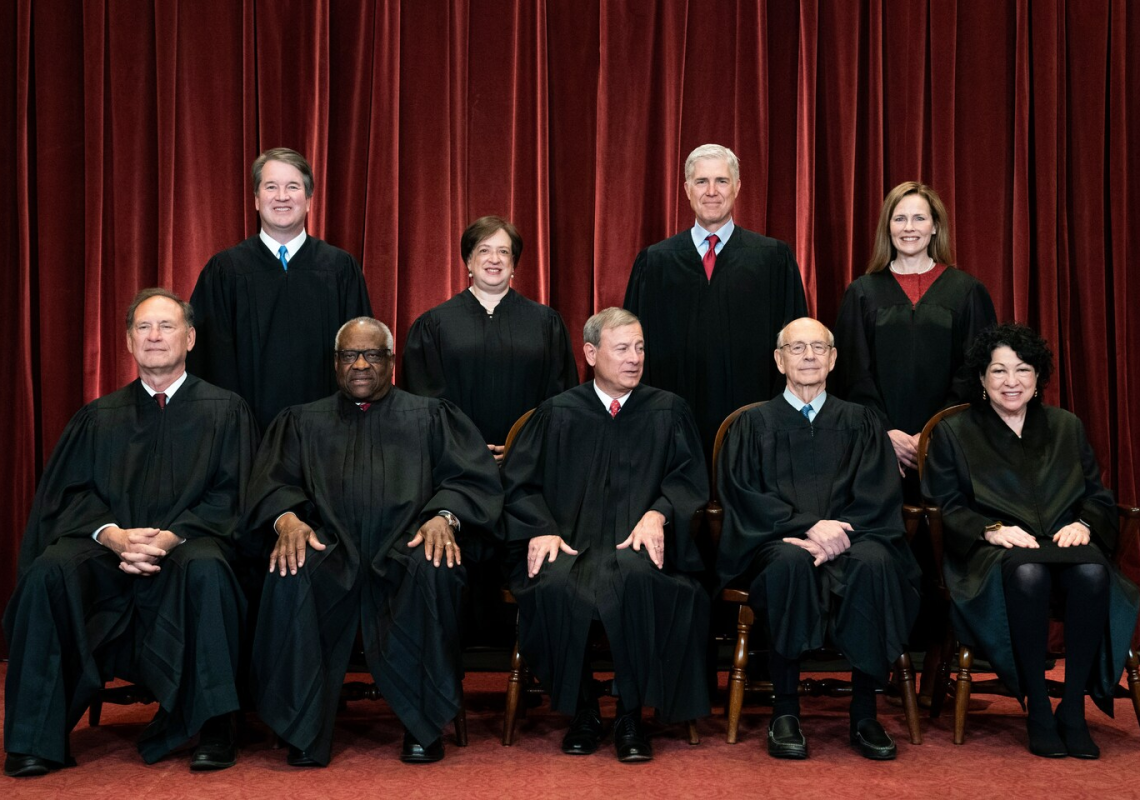In separate opinions issued on July 2, dissenting from the Supreme Court’s decision not to hear a case next term, Justices Clarence Thomas and Neil M. Gorsuch urged the court to revisit a major decision: New York Times v. Sullivan (1964). Widely regarded as one of the most important and consequential First Amendment decisions in history, in Sullivan the court declared “a profound national commitment to the principle that debate on public issues should be uninhibited, robust, and wide-open.” This decision revolutionized libel law and has guided how the Supreme Court and lower courts have interpreted the First Amendment in the subsequent decades.
If Gorsuch and Thomas get their way, however, and the court eventually modifies or overturns Sullivan, it could have a chilling effect on the ability to criticize government officials, as well as the freedom of the press to do investigative journalism and to hold government accountable.
Before Sullivan, states maintained strict libel laws in an attempt to protect individuals’ reputations in their community from being besmirched unfairly. Crucially, these standards forced defendants to prove the truth of their statements “completely and in all its particulars” — an exceptionally high bar.
The civil rights movement of the late 1950s and early 1960s exposed the danger of these strict laws. In 1960, in the case that eventually prompted the court to step in, L.B. Sullivan, the segregationist police commissioner of Montgomery, Ala., sued the New York Times and four ministers affiliated with the Rev. Martin Luther King Jr.’s Southern Christian Leadership Conference. Sullivan claimed he’d been defamed by false statements in an advertisement, published in the Times, accusing him of committing violence against civil rights activists.
In reality, there were only minor errors in the ad. But Sullivan had unequivocally overseen violence against civil rights activists. And indeed, the charge itself actually bolstered Sullivan’s reputation locally for cracking down on civil rights protesters — something many White citizens in Montgomery supported at the time. Yet under Alabama’s strict libel laws, Sullivan still won his lawsuit, with a jury awarding him $500,000 in damages, the largest libel verdict in the United States at that time.
Sullivan’s lawsuit was only one in an unprecedented string of such suits brought by Southern segregationist officials against Northern media outlets. Their goal was to intimidate the media and prevent coverage of the civil rights movement and local officials’ repressive and often brutal responses to it. Segregationists despised the Times in particular for its vocal support of integration and sympathetic reporting on civil rights.
This “libel attack” on the press was a shrewd — and for a while effective — tactic. By 1961, the Times confronted $7 million in potential libel judgments and the possibility of bankruptcy. In 1964, CBS, the Saturday Evening Post and the Associated Press faced over $200 million in potential damages. Newspapers pulled reporters out of the South and quashed stories for fear of being slapped with potentially ruinous libel suits. Leaders of the civil rights movement, which itself was facing the burden of legal defense in the libel cases and massive libel judgments, described the lawsuits as a “civil rights crisis of historic magnitude.” This litigation also deeply threatened the freedom of the press to report on a crucial issue.
Enter the Supreme Court. The Times appealed the verdict in favor of Sullivan. And in an eloquent opinion by Justice William Brennan, the court threw the verdict out and placed strict constitutional limits on state libel laws. The decision freed the press to cover the civil rights movement and transformed the law of free speech.
Brennan’s opinion observed that the central purpose of the First Amendment was protecting the right to criticize government and its officials. Accordingly, the court held that a public official could not recover damages for libel unless he or she could show that the defamatory statement was false and made with “actual malice” — with knowledge that the statement was false, or with “reckless disregard of whether it was false or not.”
Less robust protections for speech might cause speakers to hold back critical comments about government officials, even truthful ones, for fear of being sued. Freedoms of expression must have the “breathing space” they “need to survive,” Brennan wrote.
Over the next decade, in a line of cases known as Sullivan’s “progeny,” the court extended the actual malice rule to protect speakers who commented on “public figures,” defined as anyone who voluntarily engaged in a public controversy or was drawn into such a controversy.
In addition to turning back the attempt by segregationists to stifle coverage of civil rights — coverage which proved pivotal to eventual passage of the 1964 Civil Rights Act and the 1965 Voting Rights Act — Sullivan also represented a wholehearted embrace of freedom of speech. The court declared free speech foundational to democracy. It professed a “national commitment” to “uninhibited, robust, and wide-open” debate of public issues and made clear that the right to criticize government and its officials was at the core of the First Amendment’s protections.
In the subsequent decades, these principles have formed the bedrock of modern First Amendment law. The phrase “uninhibited, robust, and wide-open” has itself become foundational to the law; the Supreme Court has cited it in dozens of cases since 1964 to justify the protection of free speech in a variety of scenarios. As a practical matter, Sullivan has provided an important legal shield for the press that has encouraged reporting on much-debated affairs and generally prevented the sort of large-scale libel trouble that the media confronted in the segregationist South.
As a result, since practically the day it was handed down, Sullivan has been heralded as a landmark. Its wisdom has been generally agreed upon over the years.
And yet some commentators have pointed out a problem with the actual malice standard — it protects negligent behavior. Careless reporting, or even engaging in no attempt to ascertain facts at all is not enough to trigger liability, unless the defendant “recklessly disregarded” the truth. The modern media environment makes this approach more problematic than it was in 1964. Today, damaging falsehoods can be disseminated online with a single click, and practically anyone can be drawn into a public controversy through social media, making them a “public figure” under libel law. Gorsuch homed in on the dangers of Sullivan in the social media age in his dissent.
Criticism of Sullivan expanded with the rise of Donald Trump. Despite his long history of making dubious assertions about others, as candidate and president, Trump was vocal about his desire to eliminate Sullivan and brought a spree of meritless libel suits against the press over unfavorable comments, as if Sullivan didn’t exist. Trump’s assault has catalyzed further criticism of Sullivan.
In March 2021, Senior Judge Laurence Silberman of the U.S. Circuit Court of Appeals for the District of Columbia wrote a dissenting opinion in a libel case, expressing sentiments similar to those of Justice Thomas, in which he stated that the Sullivan decision had no “relation to the text, history, or structure of the Constitution” and encouraged its overruling. The new statements from Gorsuch and Thomas indicate that the anti-Sullivan forces may be gaining steam and that the decline of the New York Times v. Sullivan regime may no longer be hypothetical.
The Gorsuch and Thomas dissents do not commit the court to any action, of course. If it decides to revisit Sullivan in the future, it is unclear exactly what the justices will do. They could modify Sullivan, strike down some of its extensions or even uphold the decision.
Yet given how effectively libel laws can be weaponized, any major narrowing of Sullivan or its extensions could have wide-ranging impacts. Overruling Sullivan could imperil the right of Americans to criticize government officials, as well as inhibit the ability of the press to conduct crucial functions that allow for holding elected officials accountable.
The most important news stories of the day, curated by Post editors and delivered every morning.
By signing up you agree to our Terms of Use and Privacy Policy






